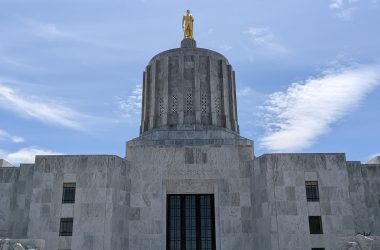 The sun near Mountaindale on July 31, 2017. Beginning November 1, you’ll see less of it in the evening. Photo: Chas Hundley
The sun near Mountaindale on July 31, 2017. Beginning November 1, you’ll see less of it in the evening. Photo: Chas Hundley
Sunday, November 1 will have 25 hours instead of the usual 24 as the end of daylight saving time happens at 2 a.m., rolling back to 1 a.m. for a do over of the past hour.
In other words, set your clock back one hour before you go to bed on Halloween night if you’re using a clock that doesn’t automatically tick to the turning tides of a tradition that made its way to the U.S. by 1918.
On the plus side, it means one hour of extra sleep.
It also means there’s one more hour until the election is finally ended on November 3.
For most Oregonians and our neighbors in Washington and California, this may be the last time daylight saving time ends after the passage of Oregon Senate Bill 320 in the 2019 session of the Oregon Legislature dictated that “DST” would become permanent, with a big caveat.
The law first had to be mirrored by Washington and California; both of the respective states passed similar laws, fulfilling that requirement, but for the law to take effect, the United States Congress must also approve the change, a move that appears to have bipartisan support in Washington D.C.
The bill exempts that portion of Oregon that follows Idaho’s Mountain Time Zone due their economic landscape more closely following Idaho’s capital of Boise than the rest of Oregon.
SB 320 gives a deadline of December 1, 2029 for Congress to approve the changes.

Chas Hundley is the editor of the Banks Post and sister news publications the Gales Creek Journal and the Salmonberry Magazine. He grew up in Gales Creek and has a cat.






